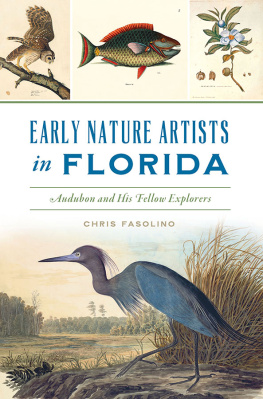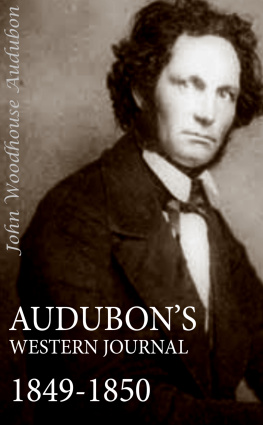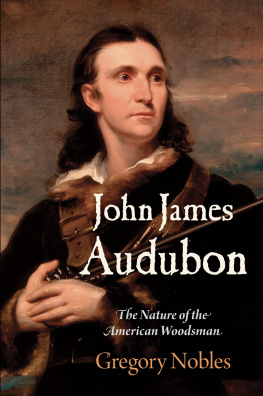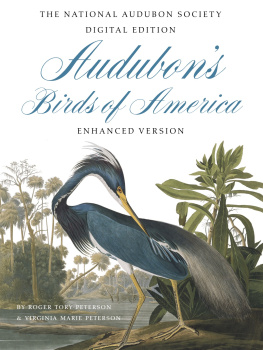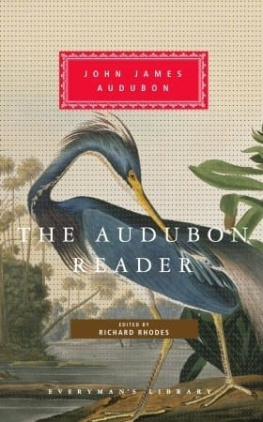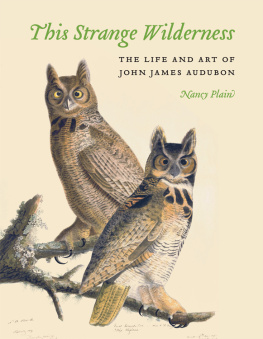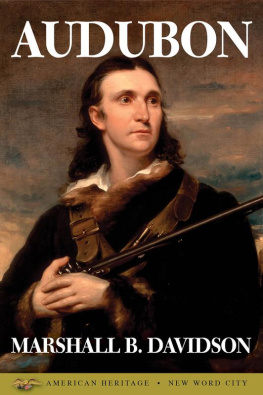

Published by The History Press
Charleston, SC
www.historypress.com
Copyright 2021 by Chris Fasolino
All rights reserved
Front cover, top, left to right: Barred Owl by John James Audubon. Digital image created by Oppenheimer Editions. Collection of the New-York Historical Society. Parrotfish by Mark Catesby. Courtesy of the Wilson Library, University of North Carolina, Chapel Hill. Franklin Tree by William Bartram. Courtesy of the American Philosophical Society. Front cover, main image: Little Blue Heron by John James Audubon. Digital image created by Oppenheimer Editions. Collection of the New-York Historical Society. Back cover: Roseate Spoonbill by John James Audubon. Digital image created by Oppenheimer Editions. Collection of the New-York Historical Society.
First published 2021
E-Book edition 2021
ISBN 978.1.43967.359.1
Library of Congress Control Number: 2021941040
Print Edition ISBN 978.1.46715.032.3
Notice: The information in this book is true and complete to the best of our knowledge. It is offered without guarantee on the part of the author or The History Press. The author and The History Press disclaim all liability in connection with the use of this book.
All rights reserved. No part of this book may be reproduced or transmitted in any form whatsoever without prior written permission from the publisher except in the case of brief quotations embodied in critical articles and reviews.
For Mr. Pete,
with the love and appreciation
of his nephew Seadog
And for David Douglas,
a treasured friend, a true artist
and a future New World explorer
CONTENTS
INTRODUCTION
Increasingly amazed. That was how John James Audubon described his reaction to the natural wonders of Florida. As an artist, Audubon would become renowned for his brilliant and colorful portrayals of birds; thus, he found much to inspire him on his Floridian expeditions. From the elegance, grace and family loyalty of sandhill cranes to the aerial acrobatics and amazing migrations of terns to the endearing and comical appearance of pelicans, Floridas bird life is abundant, varied and fascinating.
Birds of America, the collection that was Audubons masterpiece, features memorable images of Floridas most beloved birds. While the artist was traveling in Florida, he observed more than fifty species of birds that he had never before seen in his life. As a modern birdwatcher would say, Audubon added more than fifty birds to his life list during his Florida travels, as well as finding opportunities for a closer study of many species that he had glimpsed before. For this beloved artist whose work has fostered such appreciation for birds and their environments, Florida was a rewarding destination.
Audubon was not the first nature artist in Florida; he was well aware of his predecessors, especially William Bartram, a Pennsylvania Quaker who visited Florida during the eighteenth century. Bartram was a true adventurer; during his journey, he canoed across a lake full of alligators, surviving to tell the tale and sketch the creatures. His descriptions of alligators in Florida were widely read during his time, and they provoked both astonishment and skepticism. Yet many of his observations about these great reptiles have since been confirmed; Bartram was a keen observer.
The book that Bartram wrote about his travels, which was accompanied by his sketches, was a remarkable combination of natural history and poetic flair. It attracted the attention of such varied readers as George Washington, Thomas Jefferson and the English poet Samuel Taylor Coleridge. William Bartram is also noteworthy for his respect for Native American cultures and his friendly dealings with the tribes he encountered. The famous Seminole chieftain Ahaya, or Cowkeeper, gave Bartram the name the Flower Hunter. There might have been a touch of humor about the epithet, but it was also a unique tribute to his treks through the forest in search of botanical curiosities.
Florida seemed like an unexplored wilderness to William Bartram; however, another artist had chronicled its natural wonders at an even earlier period. Mark Catesby was a Royal Society man who sailed from England during the early 1700s. For him, Florida, and indeed all of America, was truly a new world.
When Catesby returned to London, he published a book titled The Natural History of Carolina, Florida, and the Bahama Islands, featuring colorful images of birds, fish, flowers and trees that were found in the new frontiers he had explored. Catesby knew that artwork would make the book more meaningful, but he was not a trained artist. The eccentric style that resulted is part of his appeal. In one image, Catesby shows a flamingo side by side with a piece of coral. A viewer might wonder, why is the coral on land? And what about the lack of scale? Is that an enormous piece of coral or a very tiny flamingo? Yet taken by themselves, both the flamingo and the coral are portrayed with care and accuracy. Catesbys artwork is unique, and it reflects a sense of excitement and discovery.
Each of these three artists was, in his own way, an explorer of nature in Florida. This book is an invitation to join them on their adventures. It will tell the stories behind beautiful and historic works of art portraying Floridas birds and animals. And it will invite the reader to share in the sense of wonder that inspired these artists on their journeys, for to observe nature with appreciation is indeed to be increasingly amazed.
In the 1720s, Mark Catesby pioneered the study of natural history in Florida. In the 1770s, William Bartram visited St. Augustine, traveled on the St. Johns River and explored the area near Gainesville that is today known as Paynes Prairie Preserve State Park. According to the Bartram Trail Conference, his journey took him to points as far south as Sebastian and as far west as Newberry. In the 1820s, John James Audubon visited St. Augustine and sailed along the St. Johns, as well as making voyages to the Keys and the Dry Tortugas.
These are their stories.
FROM LONDON TO FLORIDA
Catesby and the Royal Society
The foggy streets of London seem far away from the sun-dappled greenery of Florida. Yet in one of Londons great cultural landmarks, the British Museum, a special place is given to the work of an artist who was inspired by Floridas natural beauty.
Mark Catesby was a fellow of the Royal Society; his work is connected with the history of the British Museum, and his colorful images of subtropical flora and fauna opened up new horizons to his eighteenth-century English contemporaries. For them, the art of Mark Catesby was a glimpse into the New World.
Walking through the Enlightenment Gallery in the British Museum is like traveling through the history of civilization at whirlwind speed. The grand classical architecture of the gallery, with its towering marble columns, houses a vast range of artifacts. Ancient Greek and Roman statuary, a small-scale Egyptian sphinx from the time of the pharaohs, an astrolabe from the Middle Ages, a wooden shield made by Australian aborigines, blue-and-white Chinese ceramics, natural objects like giant nautilus shellsall can be found there. Bookshelves with leather-bound, gold-engraved volumes line the walls. Some of the books are opened, displayed in such a way that their illustrations can be viewed. And amid all these treasures, the image of a scarlet ibisa flamboyantly colored tropical birdcan be seen; the bird seems to peek out from the pages of an open book as if curious about the gallery.
Next page
